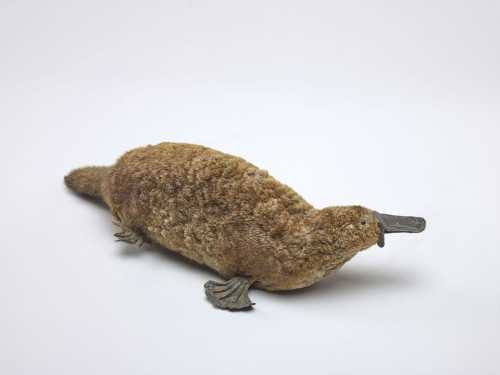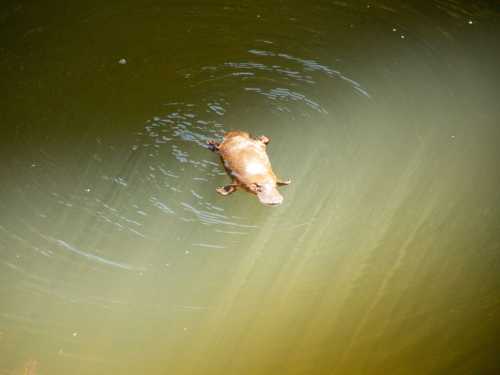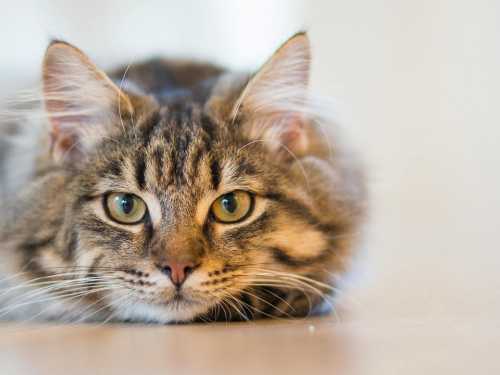
You know what's the most amazing thing about platypuses? No, not their beaked snout. Not their beaver tail. And not even their ability to lay eggs. It's the fact that they're still alive.
According to molecular and genetic studies, the lineage of monotremes (which include platypuses) split from the common ancestor of marsupials and placental mammals about 187 million years ago.
Evolutionary relic
To give you an idea, at that time, the planet was in the midst of a period of great diversity, and South America and Australia were part of the single supercontinent Gondwana. And while they retained many archaic features, their evolution continued, adapting them to unique conditions.
The process of separation of Australia from Antarctica began over 100 million years ago and was very long. The continent's final isolation created unique conditions for the evolution of local fauna.
Australia's isolation created unique ecological niches where the ancestors of platypuses could successfully develop, while preserving a number of archaic features and adapting to specific conditions for millions of years. However, their evolution never stopped. Platypuses have preserved a bunch of primitive tricks that other mammals have long since abandoned. Moreover, animals have survived with them for millions of years! What are these features? Now we will tell you.
Let's start with the most obvious: their appearance. Although platypuses look at least the size of a beaver in photos, they are actually quite small animals.
Deceptive appearance
An adult male can weigh up to 2.4 kilograms and be up to 60 centimeters long, including its tail, while females are usually smaller.
If you are lucky enough to stroke the animal, you will feel its soft fur, like that of a mole or rabbit. And if you shine ultraviolet rays on a platypus, you will see that it glows! No, this is not a metaphor, the animal's fur literally glows with a blue-green light under UV. Why is this necessary? Scientists do not yet know. Although some studies suggest that the eyes of platypuses can perceive ultraviolet radiation.
The eyes are far from their main sense organ. What then? The nose!
If you rub the nose of a platypus, you will see that it has nothing in common with a bird's beak.
Extraordinary senses
The nose is covered with soft and elastic skin, similar to rubber. And its skin itself is covered with thousands of electro- and mechanoreceptors. In general, this way of perceiving the world is used by fish and sharks. And among other modern mammals, electroreception is also known in echidnas and some dolphins. The bottom line is that the platypus senses the electric fields of other living creatures with its nose. This makes their method of perception especially developed among mammals, allowing them to “see” the electric fields of other creatures underwater.
Electroreception helps platypuses find food in murky water. By raising silt from the bottom, the animal quickly collects worms, mollusks and larvae. However, the platypus cannot eat its prey right away. Underwater, it closes its eyes, ears and nostrils, relying only on the receptors in its beak. Therefore, it puts the food it finds in its cheek pouches, and when it is on the surface or in its burrow, it carefully grinds it with its horny plates.
Every day, a platypus spends at least 12 hours searching for and processing food.
Lifestyle and unique physiology
Despite their modest size, the animals are very voracious – in order not to die of hunger, they eat up to 20% of their own weight per day. Catching half a kilo of worms every day is no easy task. To find the strength to swim for half a day, platypuses are able to significantly accelerate their metabolism during activity.
Although their basal metabolism is generally very slow, which is reflected in an average body temperature of no higher than 32°C. This is one of the archaic features: their thermoregulation works differently than in most mammals, maintaining a constant but much lower body temperature.
Swimming takes a lot of strength from the noses. To make sure that no one disturbs them while they rest, the animals dig gigantic burrows — up to 10 meters long, and sometimes much longer! The membranes on the paws bend when digging, and strong claws are exposed. A very effective solution!
Well, the reproduction of these animals deserves a separate article.

Deadly weapons and amazing genetics
From June to October, males are actively looking for a mate. The heartthrob does not stop at one single passion: he occupies as large an area as possible, covering the possessions of several females. The males fight desperately for the right to mate with the females. You don't look at the cute face, toothless beak and chubby cheeks. The showdowns take place with prehistoric cruelty: each male is armed with a pair of poisonous quills.
On the inside of the hind legs of male platypuses, there are heel spurs through which poison is released. Indeed, few mammals are venomous, that is, capable of producing toxins and injecting them through a bite or injection. The platypus is one of these rare examples. The poison consists of defensin-like proteins. In other mammals, these substances are responsible for fighting bacteria, viruses and inflammation, but in our heroes they also work as poison!
But that's not all. The genetics of platypuses are no less surprising: instead of the usual pair of sex chromosomes for mammals (XY in males and XX in females), they have as many as 10! In males, these are five X and five Y chromosomes, and in females – ten X chromosomes. This complex system resembles the chromosomes of birds more than mammals, which once again emphasizes the unique evolutionary path of these animals.
For humans, platypus toxin is not fatal, but it is very harmful. The injection site swells and hurts a lot. What is especially tricky is that victims can develop hyperalgesia – excessive sensitivity to pain. Sometimes it is so strong that even narcotic analgesics do not help! But we are lucky: platypus poison can kill small mammals, such as dogs, or cause very serious consequences.
After mating, the male takes no part in the further fate of the offspring, leaving the female to take care of the nest and future cubs alone.
Care for offspring: eggs and milk
During the few weeks of internal development of the eggs (before they are laid), the female has time to dig a hole and build a nest out of vegetation. After laying a couple of leathery eggs, the mother duck will incubate them for the next 10 days, curled up in a ball.
It is not necessary to explain that egg laying is an ancient way of reproducing offspring. But why did platypuses preserve this method of reproducing offspring at all? Scientists explained this by the fact that 3 vitellogenin genes are responsible for egg production in the body. In birds and reptiles, they are completely preserved. In most other mammals (marsupials and placentals), they have disappeared. And platypuses have preserved 1 of 3 genes. Therefore, their eggs, although they have a soft, leathery shell, similar to reptile eggs, still differ from the eggs of other vertebrates in that, due to the presence of only one functional vitellogenin gene, they contain a smaller supply of yolk. And this is understandable: after all, the hatched babies will immediately start drinking milk!
Platypus are born naked, helpless and toothy! True, with age, their teeth will fall out. The next 4 months the baby will spend in the hole, licking the mother's nutritious milk, which accumulates in special grooves on her belly. Platypus have mammary glands, but no nipples. Instead, the milk comes out through pores in the skin in two special areas, from where the baby licks it. The beaks crawl out of the hole only after 4 months. And the little one reaches sexual maturity at the age of about 1.5-2 years.
In the wild, animals as old as 10 years old have been found.
Threats and conservation of the species
In captivity, platypuses celebrate their seventeenth birthday. In addition to environmental conditions, the life of platypuses is shortened by natural predators such as dingoes, large birds of prey and monitor lizards, as well as introduced predators, in particular foxes. Unfortunately, humans are increasingly affecting the populations of these ancient mammals. Although the platypus is a unique endemic species, its population is declining due to human activities, in particular due to habitat loss, climate change and pollution. Therefore, specialized rescue and breeding programs for these animals are actively implemented in Australia to prevent their extinction.





